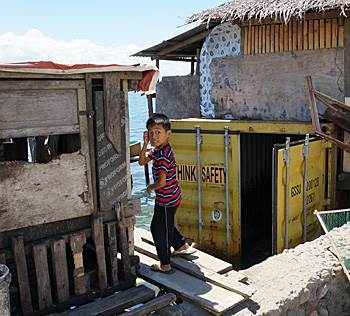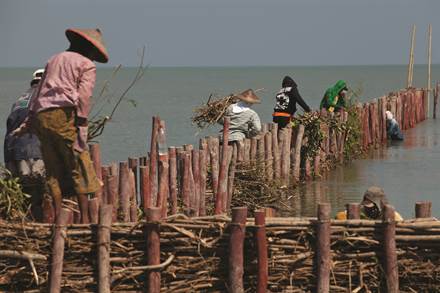
Natural fortification against typhoons
-
Coastal resilience
-
Coastal wetland conservation
-
Integrated delta management
Manila – Only one year after the deadly Typhoon Haiyan, which left behind over 6,000 casualties, Typhoon Hagupit has taken at least 20 lives before being downgraded to a tropical depression.

“The low number of casualties of this typhoon compared to Haiyan can be attributed to good disaster preparedness and timely evacuation, and the fact that there was no storm surge”, states Merijn van Leeuwen of Wetlands International, who is currently in the Philippines.
Although the fatalities are less, the impact of typhoons like Haiyan and Hagupit can be disastrous to infrastructure and livelihoods, leaving tens of thousands displaced and without shelter, food and income. With natural defence systems such as forests, line fragile coastlines, mountains and river basins in place, many of these aftermaths can be reduced.“When forests, floodplains, coastal and mountain ecosystems are healthy, they have the capacity to reduce floods, storm surges and landslides during typhoons, but also ensure sufficient and good quality water, abundant fish stocks and prevent erosion of good agricultural soil,” said Merijn van Leeuwen.
Taiwan and Japan, which have the same population density and number of natural hazards as the Philippines, have an annual death toll of 15 times less than the Philippines which is credited to amongst others a forest cover of over 40%.Although The Philippines has good laws such as on forest and coastal protection, enforcement remains insufficient. Logging in protected areas is continuing and old growth forest cover is down to only 8%. Therefore conservation and ecosystem restoration is in dire need of being strengthened by ownership taken by local communities, landowners and government.

After Haiyan last year, Wetlands International joined a Dutch government led mission to the affected Tacloban area. It was recommended to use a Building with Nature style of engineering to reduce the impact of disasters.
This includes a combination of mangrove restoration with conventional solutions such as dykes (such as currently being applied in Java, see picture).
